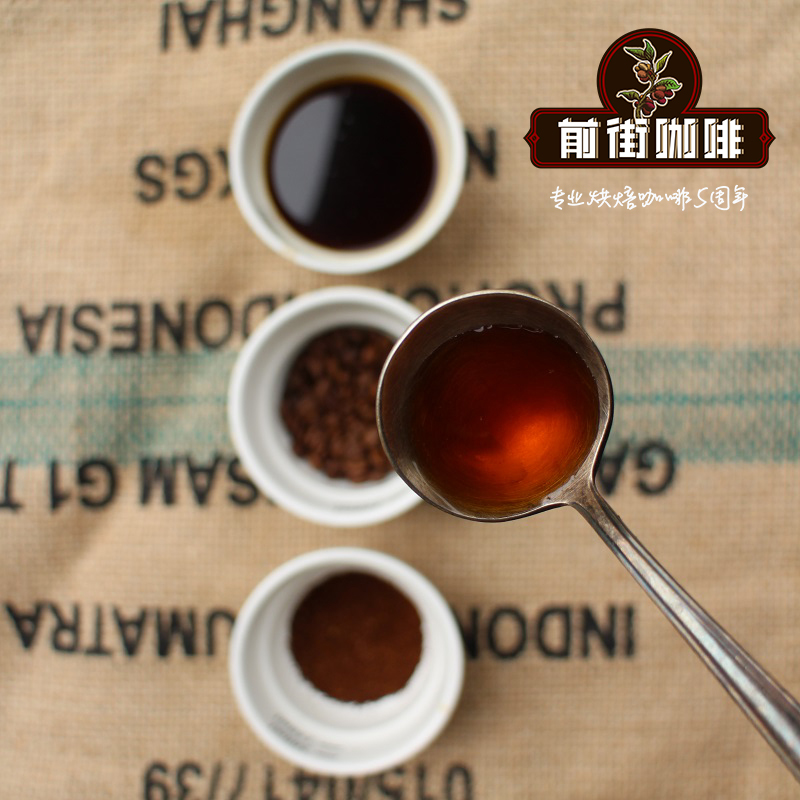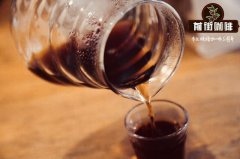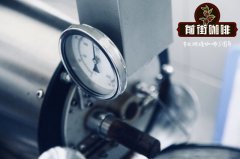Semi-washed Bourbon-Salvador Finca Farms Finca La Guachoca Coffee Bean Characteristics? have

Professional coffee knowledge exchange More coffee bean information Please pay attention to coffee workshop (Weixin Official Accounts cafe_style)
Semi-washed Bourbon-Salvador Finca Farms Finca La Guachoca Coffee Bean Characteristics? What's the flavor?
Finca La Guachoca is located at the foothills of El Salvador's endangered Cerro Verde volcano, in the fertile Apaneca Ilamatepec mountain range, at an altitude of 1410 to 1600 meters. It is owned and managed by the Pacas family, which has been growing coffee in El Salvador since 1905 and owns several small estates in the area. They bought La Guachoca in 2009--the farm was called San Roberto at the time, but the family renamed it La Guachoca after the quail-like Guachoca bird, native to this region of El Salvador and often seen on farms.
When the Pakas family took over the farm, it was in poor shape and low yield-but they saw the potential of the land because of its location, elevation and fertile soil. They have been working to improve the quality and quantity of La Guachoca production, replanting many sparsely populated areas and preparing the soil with organic matter to ensure that young trees have all the nutrients needed for healthy growth. Typically, they fertilize the soil four times a year and the leaves three times a year.
La Guachoca covers more than 31.5 hectares and is planted with red bourbon varieties and some Pacas grape varieties. Its soil is very fertile-it contains a lot of nutrient-rich red volcanic rocks, locally known as "cascajo". Maria Pacas tells us that last winter, when soil slipped off the farm, she had demonstrated how good that soil was for coffee trees-"some coffee plants were buried under the chute, but after a few days they came out through the red rocks and looked as happy as if they were using roses!"“
The gentle slopes of the farm are dotted with native shade trees-Ingas, Jocote de Corona, Avocados, Cirin, Lengua de Vaca, Pimientademontaña. These are pruned so that coffee plants get 70 percent sunlight during fruit growth and 30 percent sunlight during ripening-enabling coffee beans to slowly develop all their characteristics.
Bourbon trees on the farm are pruned using the "agobio" method. This involves bending one of the tree's main vertical stems and connecting its ends to the ground-which widens the tree without harming it, triggering the growth of new productive shoots along the bent stem. This method can help extend the life span of plants to 90 years and increase their yield.
The Pacas family implemented various soil conservation measures on their farms-such as planting native izote plants to prevent erosion, digging "fosas"-large ditches to capture excess rainwater, helping retain moisture in the soil and capturing organic matter. The family continues to grow new coffee and shade trees each year and introduces endangered native tree species to help preserve El Salvador's biodiversity.
Coffee cherries can only be carefully selected when fully ripe. They are then "half-washed"-after the coffee has been pulped with clean fresh water, fermented for 12 hours, rinsed and dried in the brick yard of the farm, with some mucus still on the beans. When 12° humidity is reached, the coffee is then stored in parchment warehouses on the farm for 30 days, giving the beans plenty of "re-conditioning"(rest) before final grinding and export. The Pacas family also invested in an in-house cupping lab that allowed them to monitor the quality of each batch they produced.
Farm: La Guachuca Farm
Director: Juan Constante
Weather: Tropical
Annual precipitation (MM): 2,000
Terrain: Hills
Semi Parras y Multiples Verticales
Breed: Red Bourbon, Orange Bourbon, Pacamara
PREDOMINANT VARIETY: Red Bourbon Whisky
Production 2015-16 (69 kg coffee bags): 260.00
TABLONES:EL TIMBO,EL ISCHO,EL CUSUCO,EL GALLINAZO,LA SIGUAMONTA
Process: Semi-washed, Natural Products: GOURMET, PETIT, PEABERRY
Breed: Red Bourbon
Processing method: semi-washing. Our half-washing process is as follows: When coffee cherries arrive at the factory, they are immediately made with clean, fresh pulp. Then pour the parchment coffee into the fermenter for 4-6 hours. During this time, 30% of the mucus (more or less) was released from the parchment and some fermentation took place. Then, wash the parchment again and leave it to dry on the terrace. This process allows coffee to form sweet cups with some complex acidity.
Finca La Guachoca belongs to CAFÉPAPAS. CAFE Pacas has launched 5 generations of coffee. In 2008, they decided to expand the coffee land they were growing and decided to buy Finca La Guachoca. The decision was based on the farm's location, elevation, microclimate and diversity. There's potential for very special coffee.
Finca La Guachoca gets its name because it houses a beautiful bird. Guachocas are quail and are common in this area. Its coffee and shade trees are currently undergoing intensive refurbishment. The Pacas family focuses on replanting entire farms using premium wines such as red wine, orange bourbon and pacamara. and continue to strengthen them through innovative processing methods. The farm provides permanent jobs for 35 people. They all have families who depend on the farm for their livelihoods. As a company, Café Pacas is committed to providing them with good working conditions, decent wages, training, etc. La Guachoca provides 90 jobs per month during harvest and 50 jobs during non-harvest periods. The impact of farms on the environment is also important. The diversity of shade and coffee trees provides habitat for different types of plants and animals. Café Pacas is also constantly working on soil and water conservation.
Front Street Recommended Brewing:
Filter cup: Hario V60
Water temperature: 90 degrees
Polishing degree: Small Fuji Polishing degree 4
Cooking method: water-powder ratio 1:15, 15g powder, first injection of 25g water, stewing for 25s, second injection to 120g water, water cut off, wait for the powder bed water to drop to half, then inject water slowly until 225g water, extraction time about 2:00
Analysis: Three-stage brewing, clear coffee before, during and after the flavor. Because V60 has many ribs, the drainage speed is faster, and the extraction time can be prolonged when the water is cut off, so that the nutty and chocolate flavor of the tail section can be better extracted.
Flavor: Various layers, overall clean, thin taste, lasting caramel sweet finish, there will be a trace of bitterness.
Important Notice :
前街咖啡 FrontStreet Coffee has moved to new addredd:
FrontStreet Coffee Address: 315,Donghua East Road,GuangZhou
Tel:020 38364473
- Prev

Special topic on Panamanian Coffee-Flavor characteristics of Red Wine treatment at Hartmann Manor, Panama
Professional coffee knowledge exchange more coffee bean information please follow the coffee workshop (Wechat cafe_style) Panama Hartmann Black Winey Panama Hartmann Manor, Red Wine treatment country: Panamanian Grade: SHG: Walken altitude: 1250-1700 Meters treatment: red wine treatment varieties: Kaduai Manor: Hartmann Chateau
- Next

Special topic on Panamanian Coffee-flavor characteristics of sun-dried beans at Duncan Duncan Manor in Panama
Professional coffee knowledge exchange more coffee bean information Please follow the coffee workshop (Wechat official account cafe_style) for a long time underestimated or even ignored Panamanian coffee, until the annual international cup test competition held in recent years, the emergence of the best coffee in Panama Best of Panama and Panama Emerald Manor (Hacienda La Esmeralda) has completely changed, this cup
Related
- Detailed explanation of Jadeite planting Land in Panamanian Jadeite Manor introduction to the grading system of Jadeite competitive bidding, Red bid, Green bid and Rose Summer
- Story of Coffee planting in Brenka region of Costa Rica Stonehenge Manor anaerobic heavy honey treatment of flavor mouth
- What's on the barrel of Blue Mountain Coffee beans?
- Can American coffee also pull flowers? How to use hot American style to pull out a good-looking pattern?
- Can you make a cold extract with coffee beans? What is the right proportion for cold-extracted coffee formula?
- Indonesian PWN Gold Mandrine Coffee Origin Features Flavor How to Chong? Mandolin coffee is American.
- A brief introduction to the flavor characteristics of Brazilian yellow bourbon coffee beans
- What is the effect of different water quality on the flavor of cold-extracted coffee? What kind of water is best for brewing coffee?
- Why do you think of Rose Summer whenever you mention Panamanian coffee?
- Introduction to the characteristics of authentic blue mountain coffee bean producing areas? What is the CIB Coffee Authority in Jamaica?

